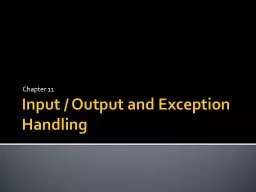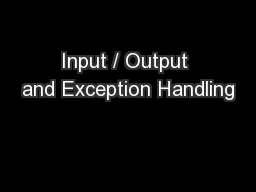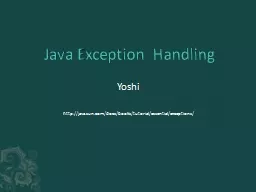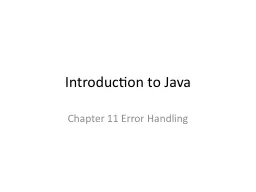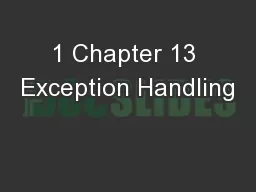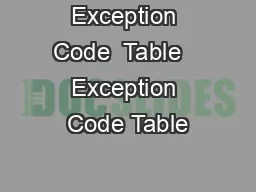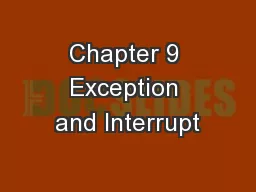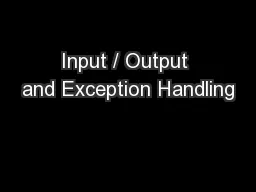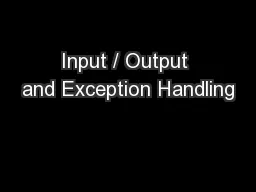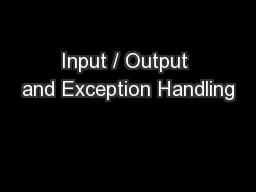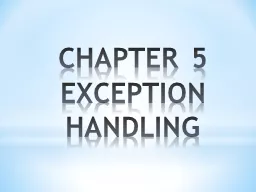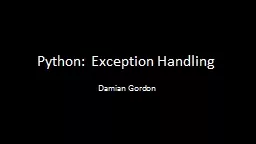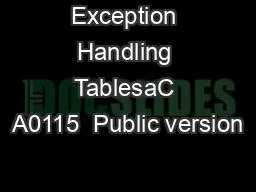PPT-Input / Output and Exception Handling
Author : celsa-spraggs | Published Date : 2019-12-11
Input Output and Exception Handling Chapter 11 Reading and Writing Textfiles Data is often stored in files such as a text file We need to read that data into our
Presentation Embed Code
Download Presentation
Download Presentation The PPT/PDF document "Input / Output and Exception Handling" is the property of its rightful owner. Permission is granted to download and print the materials on this website for personal, non-commercial use only, and to display it on your personal computer provided you do not modify the materials and that you retain all copyright notices contained in the materials. By downloading content from our website, you accept the terms of this agreement.
Input / Output and Exception Handling: Transcript
Download Rules Of Document
"Input / Output and Exception Handling"The content belongs to its owner. You may download and print it for personal use, without modification, and keep all copyright notices. By downloading, you agree to these terms.
Related Documents

